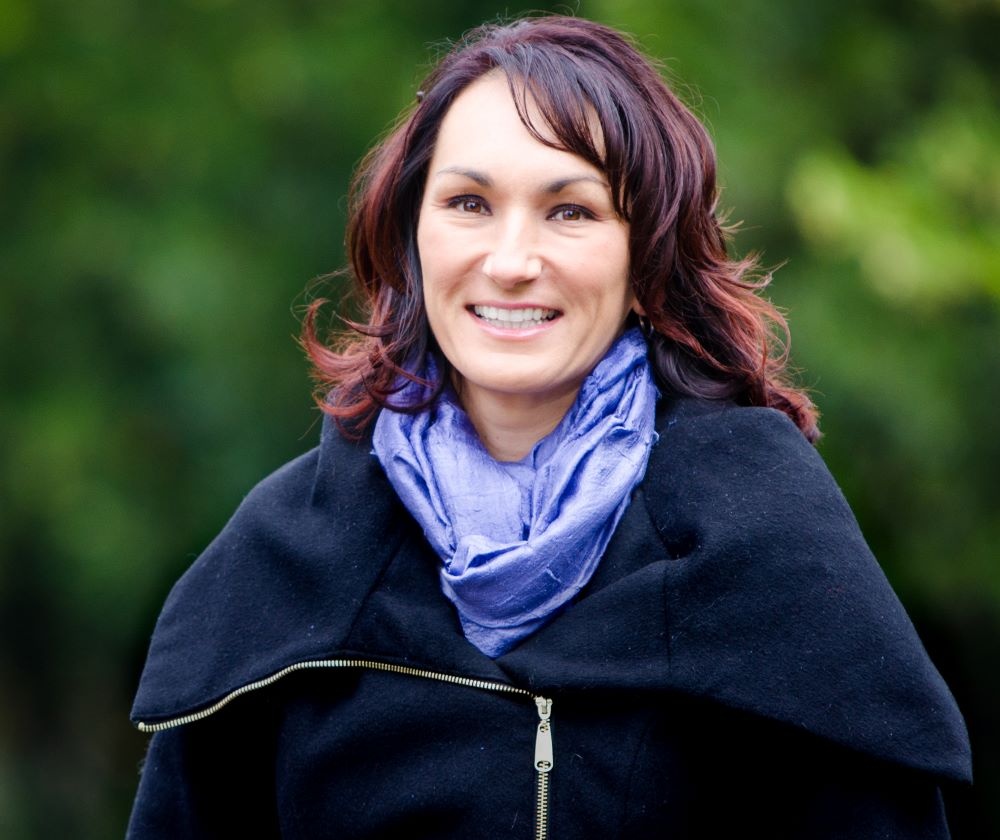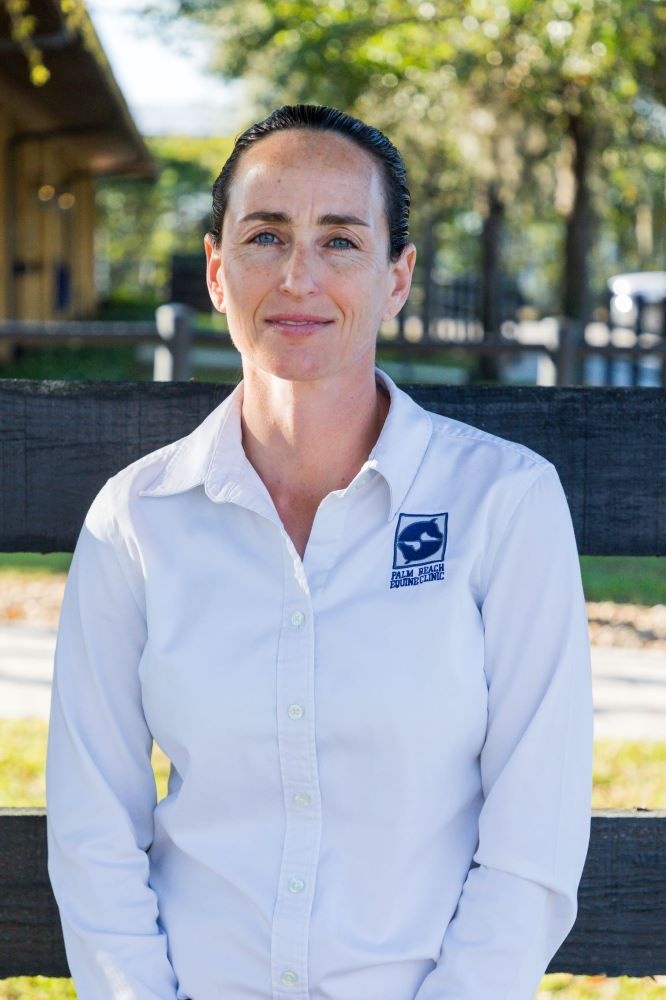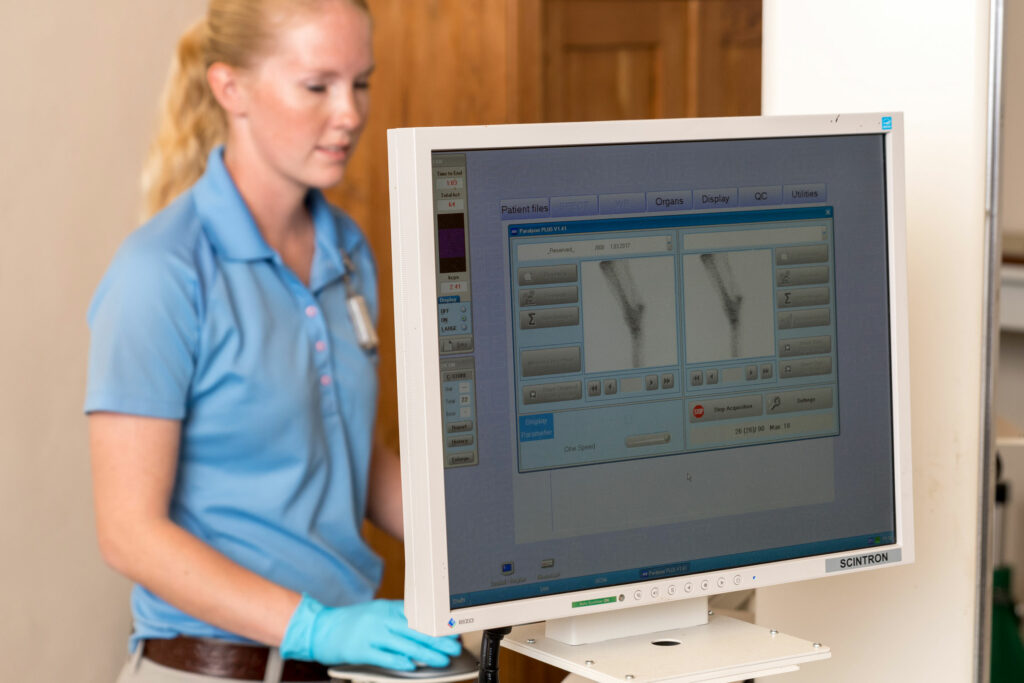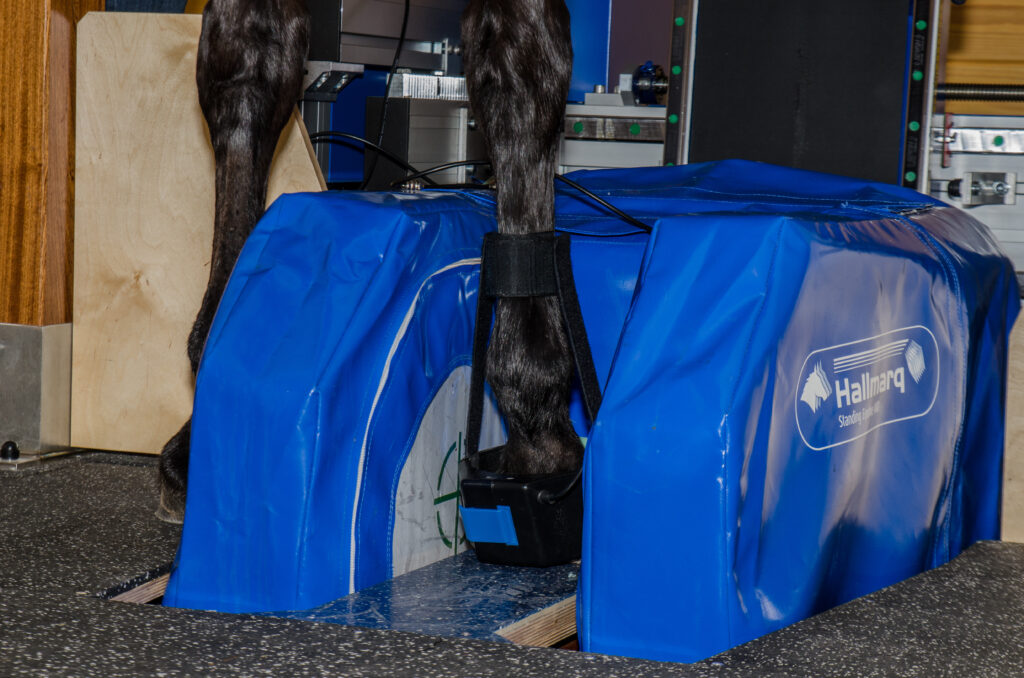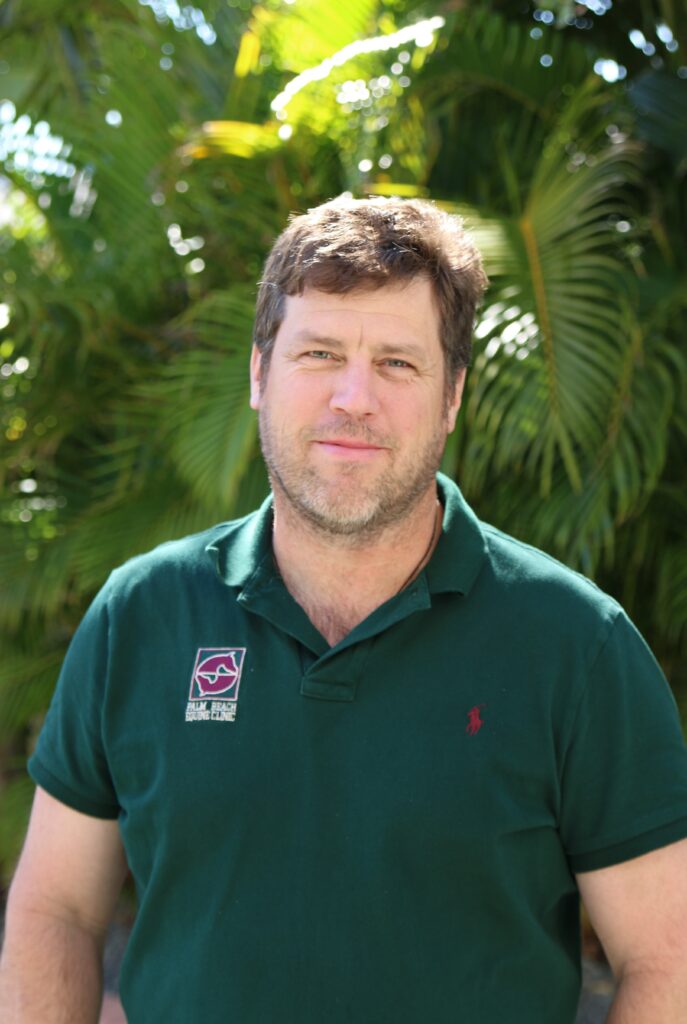Author: pbecadmin
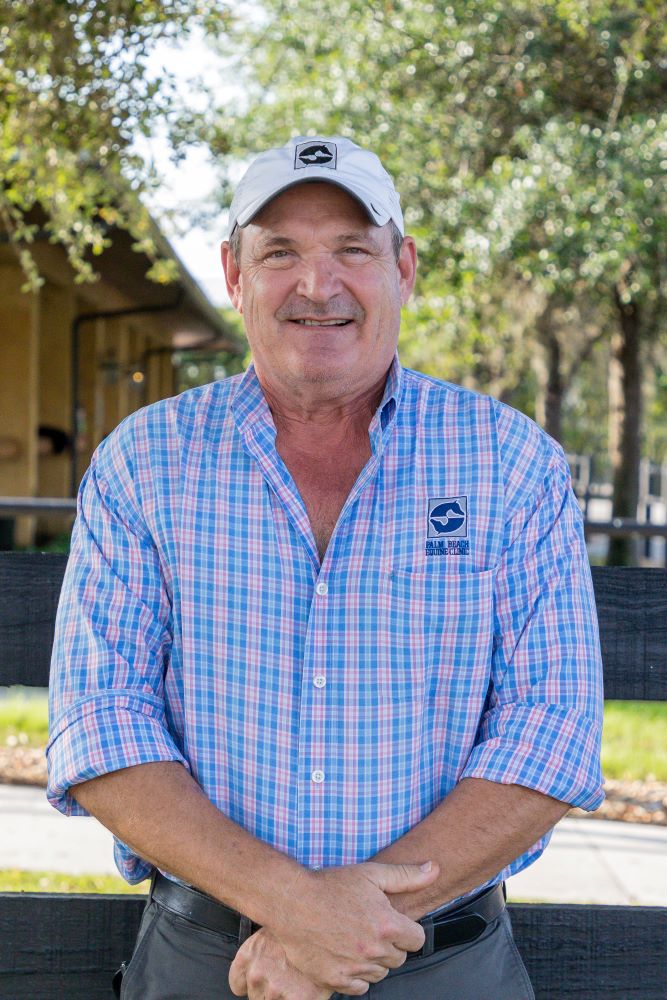
Palm Beach Equine Clinic of Wellington, FL, has a team of over 30 skilled veterinarians, including three Board-Certified Surgeons, one of the world’s only Board-Certified equine Radiologists, and numerous other experts in their fields. Palm Beach Equine Clinic’s surgical team leader, Dr. Robert Brusie, is a nationally renowned Board-Certified surgeon whose surgical specialties include orthopedic, arthroscopic, and emergency cases. Dr. Brusie has been the head surgeon with Palm Beach Equine Clinic for the past 20 years and is a beloved part of the team.
Dr. Brusie graduated from Michigan State University College of Veterinary Medicine. He completed his surgical residency at the Marion DuPont Scott Equine Center in 1989 and has been in private practice ever since. He became a Diplomate of the American College of Veterinary Surgeons in 1994. Dr. Brusie joined Palm Beach Equine Clinic in 1996.
Dr. Brusie is a Board-Certified Surgeon who is recognized for his expertise in colic surgery, as well as for his skill in arthroscopic surgery. His surgical experience expands the clinic’s progressive care in both emergency and elective procedures. He has published articles on numerous topics, including the equine intestinal tract and septic arthritis in horses. Dr. Brusie is married and has three daughters.
What was your background with horses growing up?
I grew up on a farm in Michigan. We had usually between 200-600 head of cattle and always between four to six horses. Our horses were cow ponies or driving horses. My dad loved horses and had to have them around. My family has owned our farm for six generations – it pretty much occupied all of our time besides sports and school. Needless to say, we didn’t have much time to show horses.
When and why did you decide to become a veterinarian? Did you know you wanted to be a surgeon from the start?
I decided to become a veterinarian at an early age. I think I was seven or eight years old when I pulled my first calf. One of my dad’s hired men called me ‘doc’ when I was about that age. When I went to college, my plan was to become a large animal veterinarian and live in my hometown and continue to farm part-time with my three brothers. All of that changed when I was in Veterinary school at Michigan State University. Dr. Ed Scott was one of the five surgeons at MSU. He was a gifted surgeon and a great teacher. He kind of steered me into an equine internship at Auburn University. It was one of those things that the more you did, the more you wanted to do to improve yourself. I operated my first colic by myself when I was three weeks out of vet school (32 years ago).
How did you first start working at Palm Beach Equine Clinic?

I was a surgeon at a clinic in Atlanta. In 1996 I had performed surgery for a client of Dr. Paul Wollenman’s. He had started this practice in 1975. He asked me if I needed a job. I was planning on staying in Atlanta for the rest of my career. I received phone calls from the other two partners over the next nine months, and eventually with encouragement from my fiancé, now wife Melissa, I took the job.
What do you love most about working at Palm Beach Equine Clinic?
We have an exceptional group of veterinarians and staff here. The depth and scope of our veterinarians is amazing due to the large caseload. On any individual case, there may be two to three doctors that have input on the case to ensure no stone is left unturned.
Additionally, we are so privileged to work on some of the best show, race, and polo horses in the world. It is truly an honor.
What sets the surgical services at Palm Beach Equine Clinic apart?
Between Drs. Gomez, Davis, and myself, we perform just about every soft tissue and orthopedic surgeries that are done in our field.
Personally, my greatest sense of success is when I see a horse back after surgery going as good or better than it was prior to surgery.
What are the biggest changes you have seen in sport horse medicine over the years?
Currently, the most exciting thing we see going on in medicine is regenerative therapy. Twelve to 15 years ago, we were harvesting bone marrow from the sternum and injecting it into lesions in tendons and ligaments. Now we manipulate the bone marrow or other sources of stem cells to promote more rapid and more functional healing of some of these injuries. I can assure you that in 10-20 years what we are doing now will seem stone-aged by then. There are some very clever minds performing some serious research in this field.
How do you stay up-to-date on new medical advances?
Every veterinarian at Palm Beach Equine Clinic tries to attend as many meetings as time allows. We also do a weekly journal club at our clinic to discuss recently published papers in veterinary and human medicine and surgery.
What is the most interesting or challenging surgery that you have done?
Dr. Gomez and I had a three-year-old racehorse that had split his P1 (long pastern bone) and cannon bone in the same leg in a race. We were able to piece together both bones perfectly and the horse recovered brilliantly. He probably could have returned to racing, however, the owners elected to retire him to life as a breeding sire.

How do you spend your free time when you are not working?
When I’m not doing something with my family, I really enjoy woodworking. My current project is building a kitchen table for Sarah, my assistant of 12 years. In the summer, I get roped into helping on my brother’s farm.
What is something interesting that people may not know about you?
I have three daughters who I am very proud of and tend to brag on maybe a little too much. My oldest, who was a nationally ranked swimmer, is now an anesthesiologist in human medicine. My middle one is either number four or five (depending on the week) in the nation in debate, and my youngest will probably run the free world (you will have to ask her if she wants to).
How else is the family involved in horses?
My wife (Melissa) and youngest daughter (Kayla) are horse nuts in the true sense of the word. Anything to do with horses (especially show hunters) they are dialed in. Melissa loves riding, and Kayla shows in hunters and equitation.
What makes Palm Beach Equine Clinic a special place for you?
I am blessed to have three good men as business partners. They are my good friends and great people. We are very lucky to have 20-plus veterinarians working with us who are very knowledgeable and caring individuals. We feel like a little practice, but with a lot of people who just get the job done.
Palm Beach Equine Clinic provides experience, knowledge, availability, and the very best care for its clients. Make Palm Beach Equine Clinic a part of your team!
Palm Beach Equine Clinic in Wellington, FL, has state-of-the-art surgical and advanced diagnostic imaging equipment available. With board-certified Radiologist Dr. Sarah Puchalski, Palm Beach Equine Clinic uses the Equine Standing Magnetic Resonance Imaging (MRI) and a Nuclear Scintigraphy (bone scan) camera to quickly and accurately diagnose injuries for their clients.
Every horse owner dreads seeing signs of lameness or discomfort in any horse, whether it is a backyard companion or a top-caliber sport horse. For performance horses, however, one of the first questions many owners ask upon contacting a veterinarian about a problem is, ‘Can the horse safely and comfortably return to work?’ Using Palm Beach Equine Clinic’s cutting-edge technology, Dr. Puchalski can quickly and accurately answer that question.
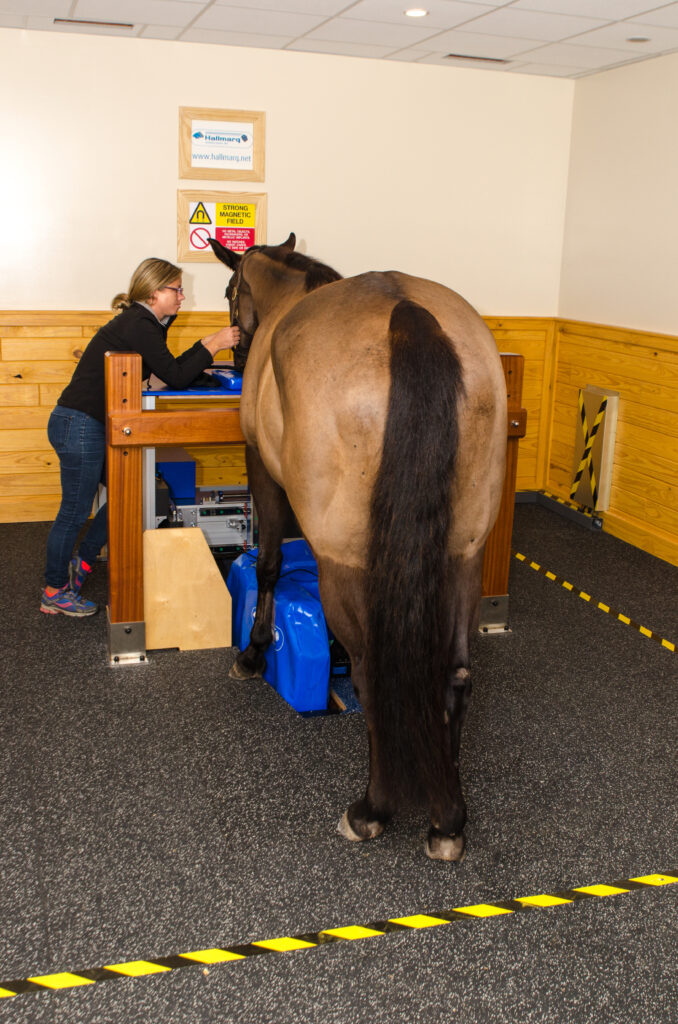
The Equine Standing MRI produces highly detailed images in several different planes to capture a complete image of a desired area. An MRI is best used to further define a specific area of both bony or soft tissue that has been pinpointed as the origin of lameness. The process can be completed while the horse is in a standing position and requires only light sedation.
Similarly, the process of Nuclear Scintigraphy (bone scan) begins with the injection of a radioactive isotope, specifically named Technetium 99. The isotope attaches to the phosphorous proteins localized within the bone and is absorbed over a few hours’ time. A specialized nuclear isotope gamma ray camera is used to capture images of the skeletal anatomy with a 360-degree view. Points of interest “light up” on the image to indicate increased metabolic activity and the site of injury.
Lameness or performance problems are most frequently approached through routine x-rays and ultrasounds, which can appear normal. Thus, it is difficult to diagnose subtle problems because the most common tools are not sensitive enough to diagnose in every case. At PBEC, the Equine Standing MRI and Nuclear Scintigraphy equip veterinarians with an advantage when troubleshooting a lameness issue and helps them to determine a correct, quick diagnosis.
Coupled with advanced technology, Palm Beach Equine Clinic is also one of very few equine practices in the U.S. with a Board Certified Radiologist on staff, and thanks to Dr. Puchalski, hundreds of MRI and bone scans are read each year at Palm Beach Eqine Clinic. In addition to state-of-the art diagnostic tools, the technology also affords economic benefits to owners.
“MRIs can give a definitive diagnosis, and that saves time and money in the long run,” said Dr. Puchalski. “For example, if a horse goes lame and is examined and treated empirically, which is a diagnosis based on likely problems through common diagnostic procedures, it either stays sound or it becomes lame again or even non-functional in three to six months. This method sets back the commencement of the appropriate therapy.
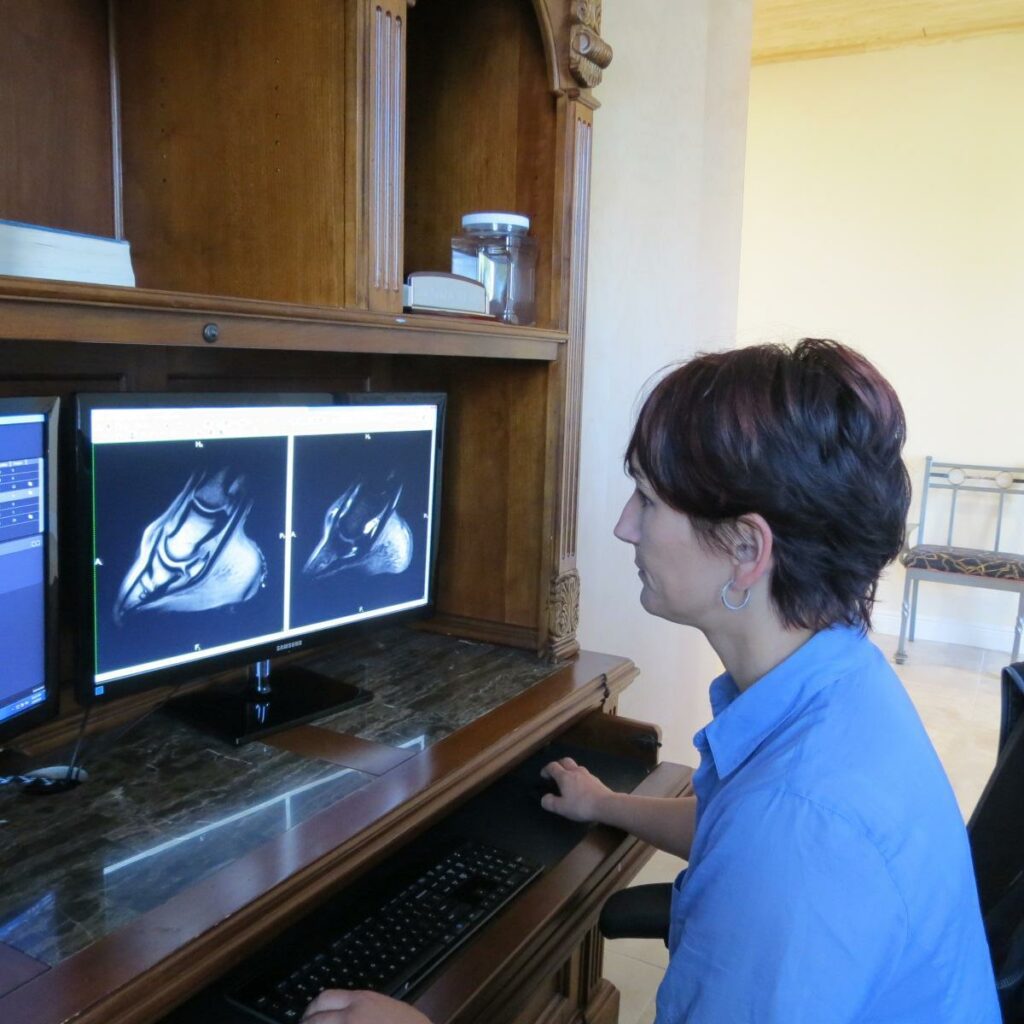
“What the MRI does is allow the horse to be treated early and correctly,” continued Dr. Puchalski. “Otherwise, you may not be treating the correct issue, and the horse could end up lame again very soon.”
Nuclear Scintigraphy does not produce a scan that is as specific, but it gives Dr. Puchalski the opportunity to procure a concrete quick diagnosis, as well as evaluate the whole horse for secondary problems.
“Oftentimes the primary problem in one place is making a horse sore in other places,” she said. “Owners like to know the root problem, but to also quickly diagnose secondary problems so the entire horse can be treated at once.”
As the official veterinary hospital of the Winter Equestrian Festival (WEF) and the Adequan® Global Dressage Festival (AGDF), Palm Beach Equine Clinic sees a high concentration of sport horses in need of care. In turn, owners of those horses are eager to see their horses quickly and happily return to competition.
“The biggest benefit to Palm Beach Equine Clinic and the Wellington community as a result of these MRI and Nuclear Scintigraphy scans is accessibility,” concluded Puchalski. “Anyone can call from the horse show to the clinic, get a scan scheduled quickly- in and out, get results fast, and then their training program can be changed immediately.”
About Dr. Sarah Puchalski
Dr. Sarah Puchalski is from Davis, CA, where she was an associate professor at the University of California in their Department of Surgical and Radiological Sciences. In 1995, she received her BS in biology from Simon Fraser University in British Columbia, and in 1999 earned her Doctor of Veterinary Medicine from the University of Saskatchewan in Saskatoon, where she received the ACVS Outstanding Large Animal Surgery Student award that same year. Dr. Puchalski interned in Field Service and Sports Medicine at New Bolton Center at the University of Pennsylvania in 2001, and completed her residency in radiology at UC Davis in 2005.
Dr. Puchalski has devoted her career to teaching and improving equine health through the development and refinement of diagnostic techniques. In 2011, she contributed to two books on the topic of equine lameness. Her recent contributions include chapters in “Diagnosis and Management of Lameness in the Horse,” edited by Ross and Dyson, as well as in “Veterinary Computed Tomography and the Clinical Veterinary Advisor: The Horse, Equine Colic and Veterinary Clinics of North America.” She also has contributed close to 50 scientific articles concerning the diagnosis of equine lameness to many periodic journals, including Veterinary Radiology & Ultrasound: the official journal of the American College of Veterinary Radiology and the International Veterinary Radiology Association; Veterinary Pathology; Equine Veterinary Journal; the American Journal of Veterinary Research; Equine Veterinary Education; Journal of the American Veterinary Medical Association; and Journal of Veterinary Internal Medicine.
Palm Beach Equine Clinic provides experience, knowledge, availability, and the very best care for its clients. Make Palm Beach Equine Clinic a part of your team!
Palm Beach Equine Clinic is proud to serve as the local headquarters for emergency services and equine diagnostics during the winter show season in Wellington, FL. As the official veterinary hospital of the Winter Equestrian Festival (WEF) and the Adequan® Global Dressage Festival (AGDF), Palm Beach Equine Clinic has been the premier surgical facility in Wellington for over three decades.
While competing in South Florida, horses and riders from around the globe have access to Palm Beach Equine Clinic’s state-of-the-art hospital for all of their sport horse needs. Palm Beach Equine Clinic has a team of over 30 veterinarians, which includes three Board-Certified Surgeons, a Board-Certified equine Radiologist, and numerous other experts in their fields. All competitors and their traveling veterinarians are welcome for the support of services and collaboration throughout the season.
Referral Veterinarians Welcome
The referring relationship between veterinarians is most commonly seen in the specialty departments of surgery, internal medicine, ophthalmology, and advanced diagnostic imaging. At Palm Beach Equine Clinic, the advanced diagnostic imaging and surgical technology is unmatched, and the three Board-Certified Surgeons are skilled in many procedures that require high levels of expertise and advanced current equipment. As a result, many veterinarians refer their clients to the facility for specialty services.
Dr. Weston Davis, one of the Board-Certified Surgeons on the staff at Palm Beach Equine Clinic, works with many referral cases. Throughout the year, veterinarians from all over Florida frequently refer their clients to Palm Beach Equine Clinic for surgical procedures and advanced diagnostic imaging. The referring veterinarians may range anywhere from general practitioners to other surgeons that do not have access to surgical facilities or the most modern diagnostic imaging modalities while on the road.
“As a rule, we are friendly with referring doctors and take care of their clients with as much high-level care and professionalism as possible,” Dr. Davis stated. “It is important to us to maintain good relationships with the veterinarians that refer to us for specialty work. We always try to facilitate whatever level of involvement they desire. If they want to come and be there for the surgical procedure, we make that happen, and if they just want to send the case and not be as involved, we can do that as well. However, we also always collaborate with the referring veterinarian and the client as a team. If they send a horse in for a surgical procedure, we are going to do the procedure and then connect the client with the referring physician for the follow-up.”
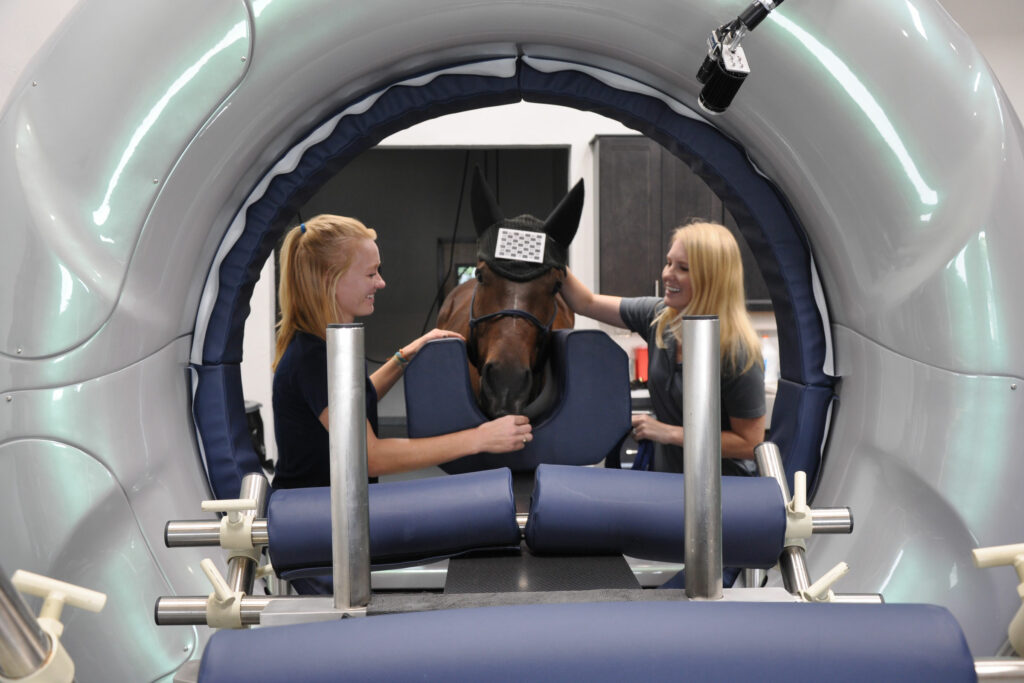
Talented Surgeons and Advanced Diagnostic Imaging
The cutting-edge services available at Palm Beach Equine Clinic are made possible by the expertise of the hospital’s talented surgeons, along with the assistance of state-of-the-art diagnostic imaging and comprehensive surgical and medical resources. The combination brings many of the best veterinarians in the world to Palm Beach Equine Clinic for assistance with their most complex cases.
Among the hospital’s features, the latest in surgical technology enables less invasive operations that result in faster recovery times for the horse. Dr. Davis explained how diagnostic imaging is used during surgery to help guide procedures and assure the best possible result.
“Magnetic Resonance Imaging (MRI) and other advanced diagnostic imaging modalities can often be used for three-dimensional mapping to help enhance the surgical technique,” he noted. “There are some fractures in particular where the surgeon can map out the exact configuration of the fracture off of the MRI scan. We are then able to place markers with the MRI to guide a more exact, refined surgery.
“Intra-operatively, x-rays are taken to view progress, particularly for fracture repairs,” Dr. Davis continued. “The digital radiographs allows us to view the fracture in two planes to ensure optimal screw placement and fracture repair. Ultrasound is also frequently used in surgery for some of the more delicate procedures, specifically with soft tissue.”
Other surgical procedures may be guided with Arthroscopy, which aids in visualization of a joint; Laparoscopy, which uses a camera inserted into the abdomen; or Endoscopy, which is used in upper airway procedures. With the most advanced diagnostic imaging technology onsite, Palm Beach Equine Clinic is the go-to hospital for equine owners and referral veterinarians from around the world during the winter season in Wellington.
Palm Beach Equine Clinic provides experience, knowledge, availability, and the very best care for its clients. Make Palm Beach Equine Clinic a part of your team! To find out more, please call 561-793-1599.
Dr. Tyler Davis graduated from the University of Glasgow School of Veterinary Medicine in Glasgow, Scotland, and performed his undergraduate studies at Pennsylvania State University. He then became a member of the Royal College of Veterinary Surgeons. Dr. Davis was born in Linesville, Pennsylvania, and is married to Dr. Janet Greenfield, also a Palm Beach Equine Clinic veterinarian. He enjoys fly-fishing and spending time with his wife and their two children.
How did you get your start with horses?
Entering vet school, my intentions were always to work in large animal medicine. I actually thought I might focus on farm animals, having grown up in a farming area in Pennsylvania. My focus turned to horses alone after starting to work with the university research ponies and spending more time around the equine hospital in my first year of vet school.
When and why did you decide to become a veterinarian?
My interest in veterinary medicine started in middle school. I participated in 4-H, raising animals for our county fair, and had friends who were farmers. Between the two I met many of the local vets and experienced the veterinary profession. When offered to ride along with them on calls, I agreed. While I did investigate other degrees within the science/biology field, I settled on veterinary medicine.
What was the experience of attending veterinary school in another country, and how did that enhance your education?
I was lucky to have the opportunity to attend vet school at the University of Glasgow in Scotland. Attending vet school in a different country afforded me the opportunity to visit places and experience cultures I would have otherwise never had. Also, I believe the experience allowed me to see agricultural practices in a different light, when compared to those practices in the USA. I participated in externships both in the UK and in the USA (knowing I wanted to move back home following graduation) while attending vet school, allowing me to discover different qualities from each.
Why did you choose to focus on dentistry?
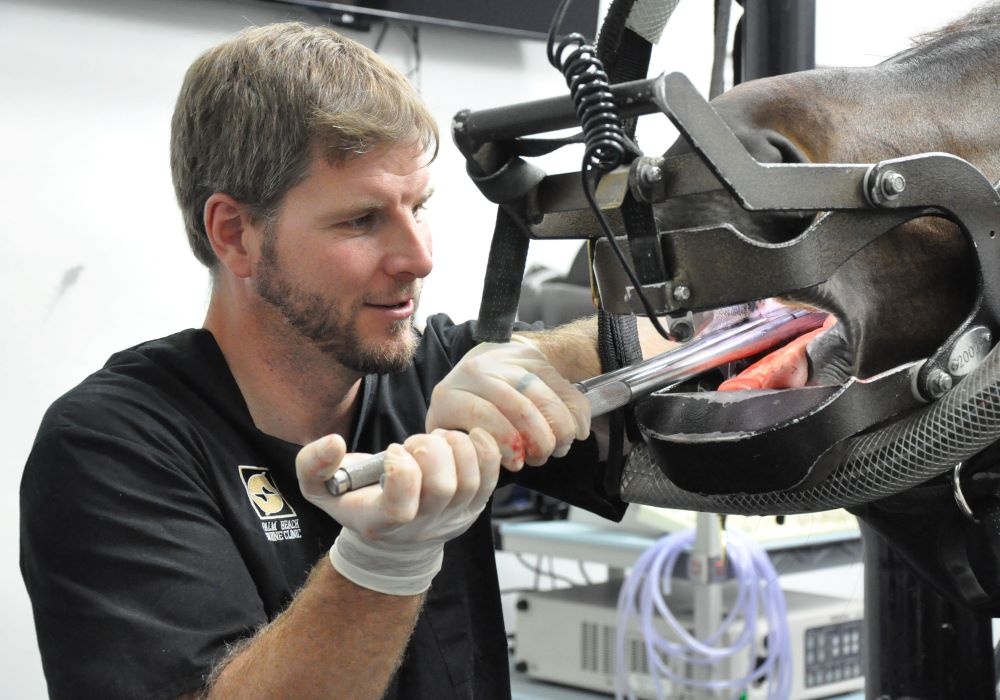
I think that I have a strong focus in dentistry but have a number of other skills as well. When starting at PBEC there were only 1-2 other doctors in the practice performing routine dentals floats and the like. I enjoyed the dental work and began steering my focus on the topic through wet labs, continuing education seminars, etc.
What kinds of work are involved with equine dentistry?
My focus in dentistry goes beyond simply floating teeth. While routine dental floats do take up a large portion of my dentistry duties, there are other aspects of the field, which I participate in as well. I also see horses for dental examinations when we may think there is a relationship between the dentition/head and their ability to perform at their desired level. Tooth extractions make up another portion of the dentistry I perform. Occasionally we find infected or fractured teeth on the routine dental exams, but more often these horses are referred to us, either with a diagnosed tooth problem or with a related complaint (not eating, plays with bit during work, throwing head, etc.). We are able to bring these horses to the clinic to be “worked up” (diagnosis through x-ray, oral exam, etc.) and treated (oral tooth extraction, sinus flush, etc.). We have a great facility offering versatility with cases. I work closely with our surgical staff so that if needed, we can put a horse under general anesthesia if more invasive surgical procedures are merited.
What do you love about working at PBEC?
Palm Beach Equine Clinic has both a great facility and great staff. It is a joy working here.
What are some of your other interests?
My other interests include archery, fishing, and woodworking. Typically if I am not working then I am spending time with my beautiful wife and daughters.
What is something interesting that people may not know about you?
Growing up in Pennsylvania, I am actually a pretty good Polka dancer.
The veterinarians at Palm Beach Equine Clinic in Wellington, FL, caution horse owners of recent toxicity cases that have arisen in South Florida suspected by the low growing weed, Creeping Indigo. Although Creeping Indigo is not native to Florida and has been reportedly growing in the state since the 1920s, the plant has recently spread from the past summer’s humid conditions. Most toxic plants are not palatable to horses and therefore do not pose as much risk; however, it appears that horses are eating Creeping Indigo with suspected fatal effects. The only real treatment is to recognize and remove the poisonous plant from all grazing areas.
Palm Beach Equine Clinic’s Dr. Kathleen Timmins explained that veterinarians in South Florida are suspecting Creeping Indigo cases more often and in more places than ever before. Many people are unaware of the problems this toxic plant can cause.

Signs and Symptoms
“Toxicity from Creeping Indigo can present itself through a number of different symptoms, which can make it difficult to recognize and definitively diagnose,” Dr. Timmins noted. “There is no test or treatment, and the damage that it causes can be irreversible. The only true treatment is limiting their exposure to it.”
The most important step to avoid illness is to eradicate the plant from all pastures and grazing areas. Horse owners should walk through their property and review grass areas for the plant. Creeping Indigo is a prostrate plant that is commonly found in high traffic areas of grass, such as parking lots, turf, roadsides, medians, and overgrazed pastures. Flowers arise from the base of the leaves and are pink to salmon in color. It often grows under the grass, and when it is not flowering, it can be difficult to see. It also has a very deep root, so it is not easy to pull up.
Both neurologic and non-neurologic signs are documented, and researchers are uncertain how much Creeping Indigo a horse needs to consume before clinical signs appear.
The most notable signs are neurologic; horses may seem lethargic or have less energy than usual. Head carriage is often low, and there may be rhythmic blinking and jerking eye movements. An abnormal gait may be noticed, characterized by incoordination and weakness in all limbs.
Non-neurologic signs may include high heart and respiratory rates, high temperature, watery discharge from the eyes, discoloration of the cornea or corneal ulceration, or ulceration of the tongue and gums.
“There are so many varied symptoms that it is often not the first diagnosis you would think of,” Dr. Timmins explained. “There are also many other toxic plants, but if horses have access to good quality feed or grazing, they will not usually eat the toxic plants. The best solution is to find the plant, get rid of it, and not have to find out if it has been consumed.”
Treatment
Horses that are quickly removed from the plants may recover completely, but there is no effective treatment, and symptoms may persist. The best way to prevent poisoning is to stop access to paddocks where Creeping Indigo is present and to remove plants by physical means or herbicide application.
Shipping fever is a respiratory disease complex associated with the transport of horses. A common scenario for shipping fever is when a horse is transported from its barn to another state to attend a show. The horse may be healthy and well-hydrated before entering the trailer, but the stress of travel can weaken the immune system.
Another leading factor is tying a horse’s head up while trailering long distances. The mucociliary apparatus of the trachea, which clears dirt and debris from the lower airway, is interrupted due to dehydration, change in temperature, and the inability of the horse to lower its head. The introduction of foreign material into the lower airway can lead to pneumonia, fluid in the pleural cavity (surrounding the lungs), and associated respiratory distress.
Signs and Symptoms to Watch For
Common symptoms noted are hyperventilation, increased rectal temperature, coughing, and nasal discharge after travel. The horse may seem depressed, not willing to work, and not interested in food or water. It is important to call the vet immediately if any of these symptoms are observed after a horse travels. The faster an infection in the lower airway is treated, the quicker and more likely the horse can recover. Shipping fever, if left untreated, can lead to severe pleuropneumonia, which can be life-threatening.
Treatment of Shipping Fever
Initial treatment includes antibiotics, anti-inflammatories, and hydration. If pneumonia progresses without treatment, surgery may be indicated, which can include removal of a rib and placement of chest drains (to drain fluid around the lungs). The vet should be called, and it is crucial to begin treatment at the earliest sign.
There are several preemptive steps that can be implemented to reduce the risk of a horse developing respiratory disease related to travel:
- Split up long trailer rides over several days. Be sure to take breaks and let horses out of the trailer at least every 6-8 hours, if possible.
- Ensure the horse is properly hydrated before travel. Common preventative practice includes administration of oral or IV fluids by a veterinarian prior to travel.
- Discontinue any immunosuppressant drugs 48 hours prior to travel. This includes steroids such as dexamethasone.
- Ship horses in a box stall or similar enclosure so their heads do not have to be tied during travel.
- Ask a veterinarian about immunostimulant drugs that can be given prior to travel.

As more and more international-level sport horse competitions are brought to North America, the import and export of equine athletes overseas has increased significantly. Moreover, with the winter show season in Florida, horses from around the world are about to make a pilgrimage to South Florida.
Either for a purchase or regularly scheduled show-season travel, Dr. Jordan Lewis of Palm Beach Equine Clinic works with Florida state veterinarians to simplify the process of importing and exporting horses to and from international destinations.

Where to Begin
The transport process begins with obtaining travel documents, including an equine passport and health certificate, and organizing travel arrangements with a professional equine shipper. Once travel is organized, checking the horse’s health is suitable for traveling is always the top priority.
“The most important thing to have in order is health records, up-to-date vaccinations, and complete preventative care,” said Dr. Lewis. “Much of the testing upon import and export depends on the outbreaks of different diseases in the import and export countries. The requirements change year to year and even month to month.”
Dr. Lewis is one of the many veterinarians at Palm Beach Equine Clinic who helps owners navigate through the ever-changing import, export, and quarantine regulations.
Requirements Differ Depending on the Specific Import and Export Countries
“Most horses that are coming from Europe to the U.S. to compete in Florida fly into Miami and are placed in a two- or three-day U.S. Department of Agriculture (USDA) quarantine depending on the country they are arriving from,” said Dr. Lewis. “If they are arriving from South America, however, requirements are different and they will spend seven days at USDA in Miami.”
It is there that the most current regulations are upheld and tests are performed to rule out the presence of any threatening diseases.
When importing to the U.S., Dr. Lewis affirms that many tests are required through bloodwork, including equine infectious anaemia (EIA) or coggins; piroplasmosis, which is a tick-borne disease; glanders, a common bacterial disease; and dourine, a parasite-born venereal disease. When traveling from South America, horses are also tested for other parasites, such as screw worms. When exporting from the U.S., testing will vary based on the regulations of the destination country, its current health precautions and common parasites or diseases.
CEM Quarantine
Once the initial quarantine is complete, geldings are released into the general population, while stallions and mares are transitioned to Contagious equine metritis (CEM) quarantine at either a commercial or private quarantine facility.
CEM is a venereal disease in horses caused by bacteria and is only spread during breeding or through infected semen during artificial insemination. CEM quarantine is recommended for all horses entering the U.S. from Europe, but not necessary for those flying in from South America as the disease is not present in those countries.
According to Dr. Lewis, CEM quarantine takes about 15 days for mares and 35 to 40 days for stallions. Taking this into account, she recommends owners plan a month to complete the travel regulations for a mare and two months for a stallion. Horses that are continually showing obviously don’t have this time built into their travel schedules, and that is where waiver tents enter the equation.
Mares and stallions that bypass CEM quarantine are shipped in a sealed trailer to the competition facility where they enter quarantine in a waiver tent to keep them secure from the general horse population while competing.
If horses are admitted into a traditional CEM quarantine, veterinarians like Dr. Lewis perform the appropriate tests and cultures that clear a horse for approved release into a new home or to the event.
“We work very closely with state veterinarians to do all the blood draws and testing for imported horses, as well as stay on top of the requirements of export countries so each horse can easily and safely transition into the equine population,” said Lewis.
While requirements may change often, the ultimate goal of veterinarians like Dr. Lewis and her colleagues remains the same: releasing safe, healthy, and happy horses to travel into the U.S. and all countries around the world.
Horses are competing around the world more than ever. It is important for all horse owners to implement a routine for vaccinations and biosecurity protocols to keep their horses healthy. Many infectious diseases are easily transmitted between horses and spread quickly through a stable or showground if the proper measures are not taken. The veterinarians at Palm Beach Equine Clinic are very experienced with isolation cases and always available to discuss the important steps that should be taken to maintain effective biosecurity protocols. Palm Beach Equine Clinic encourages owners to reach out to their veterinarians at any time for more information or alert doctors of a suspected potential risk.
Preventative Equine Healthcare
The best first line of defense for horse owners is to maintain current equine vaccinations. Equine Influenza and Equine Herpes Virus (EHV-1) are two deadly diseases that are highly contagious and should always be included in a routine vaccination program. In the United States, it is now required for all horses attending a USEF competition to be vaccinated for Equine Influenza and EHV-1 prior to any event. Official documentation of vaccinations being administered within the previous six months must accompany the horse to the competition.
Vaccination does not guarantee absolute protection against any diseases, and biosecurity measures should also be taken as added protection.
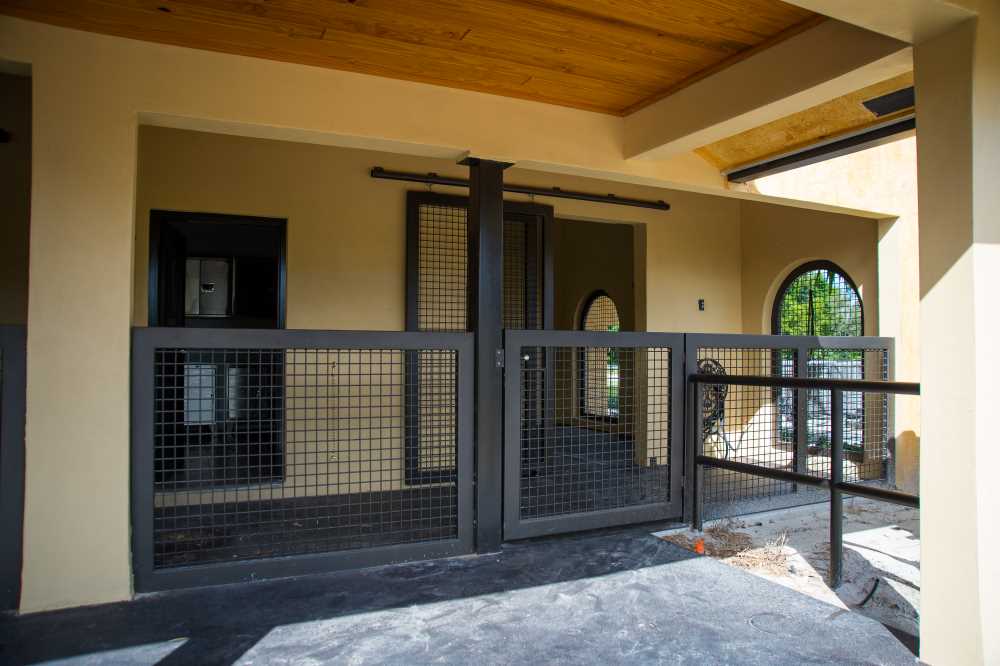
Biosecurity is a preventative measure taken to reduce the risk of transmission of infectious diseases by people, animals, equipment, or vehicles. Biosecurity is important at all times, even when an outbreak has not occurred.
The Stress of Travel
Owners that use commercial transport for their horses should confirm that the trailers have been disinfected between each shipment. Trailers should always be well ventilated, and horses should be provided with fresh, clean water at all times. The stress of travel can decrease a horse’s immune system, causing more vulnerability to disease. It is important to monitor your horse’s behavior and health closely before, during, and after traveling.
Preventing the Spread of Diseases
Simple day-to-day practices in health care and hygiene are also very important in reducing the risk of contracting an infectious disease. Washing hands between grooming horses and regularly cleaning grooming supplies can reduce the spread of infection. When attending a horse show or moving horses to a new location, a footbath for all persons entering or leaving the barn at each doorway can be effective in disinfecting shoes to reduce tracking disease into the barn. If horses are showing a depressed attitude, have stopped eating, are running a fever, and/or have a runny nose, contact your veterinarian immediately. Early medical attention for an infectious disease makes a large impact on the recovery of your horse and the equine community’s safety.
The best way to safeguard any horse’s health is to keep the immune system strong with support from a suitable nutrition and exercise program. Vaccinations, a proper deworming program, and biosecurity practices will provide additional protection.
Palm Beach Equine Clinic prides itself as being a consistent leader in sport horse medicine and continues to expand the diagnostic imaging technologies to provide the best services for clients. In addition to state-of-the-art imaging technology available on-site, Palm Beach Equine Clinic is fortunate to work directly with world-renowned Board Certified Radiologist Dr. Sarah Puchalski.
Dr. Sarah Puchalski is a Diplomate of the American College of Veterinary Radiology whose specialty includes the interpretation of diagnostic imaging including Radiographs, MRIs, Nuclear Scintigraphy, and CT scans. Dr. Puchalski’s job requires a high level of specialization to properly review imaging to produce comprehensive written reports for referring veterinarians. In addition to her full-time position with PBEC, Dr. Puchalski reads imaging cases for clinics all over the world. Many veterinarians and owners request a consultation as a second opinion on Pre-Purchase examinations radiographs and ultrasound evaluations.
Pioneering Equine Diagnostic Imaging Modalities
Palm Beach Equine Clinic has always been a pioneer in advances of technology within the equine veterinary industry. Almost 30 years ago, Palm Beach Equine Clinic bought the first ultrasound for equine practice in South Florida. Twenty-five years ago, Palm Beach Equine Clinic installed the first Nuclear Scintigraphy gamma ray camera to perform bone scans. Twenty years ago, Palm Beach Equine Clinic assisted in developing Computed Radiography (CR) for horses. Currently, Palm Beach Equine Clinic has the most advanced surgical and diagnostic imaging equipment available, including a standing MRI unit, MiE gamma ray camera, Digital Radiography, Video Endoscopy, and a bevy of additional diagnostic equipment.
“Palm Beach Equine Clinic has a great case population and great equipment, which is a huge bonus for someone doing what I do,” Dr. Puchalski stated. “The equipment is exceptional, the technical staff is excellent, and the case population of the region is obviously amazing.”
Nuclear Scintigraphy Imaging
Palm Beach Equine Clinic proudly offers an updated Nuclear Scintigraphy lab (bone scan) that houses the MiE Nuclear Scintigraphy gamma ray camera. Nuclear Scintigraphy is typically used to diagnosis injuries or bone remodeling within the skeletal anatomy of the horse. This specialized camera is equipped with sharper contours for precise imaging that results in accurate lameness diagnoses. Advanced software provides the ability to acquire high quality images despite small movements from the patient. This feature reduces the time required to complete a study, which provides quicker results.
Bone scans are also very useful in defining multi-limb lameness origins for the hard to diagnose, long-duration lameness cases. Typically, Nuclear Scintigraphy scans isolate points of injury to be identified further with other diagnostic techniques, such as digital radiology and magnetic resonance imaging (MRI).
The clinic offers an MRI lab containing the innovative Equine Standing MRI manufactured by Hallmarq, which scans the equine distal limb in a standing position requiring only light sedation. MRI is very useful to further define a suspected lameness origin by acquiring more defined images of boney and soft tissue structures.
As one of the top equine medical centers, Palm Beach Equine Clinic has the pleasure of working with many highly specialized, world-class equine professionals. Dr. Peter Heidmann, DVM, DACVIM, is a Diplomate of the American College of Veterinary Internal Medicine, as well as the Owner/Hospital Director of Montana Equine Medical and Surgical Center in Three Forks, MT. In conjunction with a busy schedule of managing Montana’s leading full-service equine referral practice, Dr. Heidmann joined the team at Palm Beach Equine Clinic in Wellington, FL, for the first time this past winter to share his expertise in internal medicine. Dr. Heidmann is scheduled to return again for the 2017 winter season.
Dr. Heidmann grew up in New England and in the year 2000, graduated from Tufts University in Massachusetts with his veterinary degree. He completed his required internship at Arizona Equine, followed by a one-year surgical fellowship at Oregon State University. Beginning in 2002 to 2005, Dr. Heidmann completed a residency for Internal Medicine at the University of California, Davis.
Following his residency in 2005, Dr. Heidmann began his career with a private veterinary practice in Montana. Then an unfortunate turn of events quickly changed his new employment. Dr. Heidmann’s predecessor in Montana passed away in a tragic car crash on the last day of the year, and Dr. Heidmann stepped up to continue to build the practice left to him. Over the last ten years, Dr. Heidmann has developed Montana Equine to include two satellite offices and six senior veterinarians, plus become the leading referral hospital in the state.
As a Board Certified Internal Medicine Specialist, Dr. Heidmann specializes in neonatology, infectious disease, and ultrasound. In addition to his core internal medicine interests, Dr. Heidmann’s strengths also include advanced performance evaluations.
Dr. Heidmann was recruited by Dr. Scott Swerdlin, President of Palm Beach Equine Clinic, during the fall season of 2015. Dr. Heidmann’s wife, Allison, is a professional jumper and enjoys showing at the Winter Equestrian Festival (WEF). When Dr. Swerdlin offered Dr. Heidmann the opportunity to join PBEC and spend the winter in Wellington, he jumped at the opportunity.
“It worked out really well for me, for family reasons as well as professional reasons, to come down and do internal medicine specialty work during the winter in Wellington,” Dr. Heidmann detailed. “It is nice on the professional front, because Montana is the fourth biggest state, but the second lowest in per capita people. There are a lot of horses there, but there is not a lot of specialty horse work during the winter, so it was really nice to be able to work with the caliber of athletes that are at the WEF and come into Palm Beach Equine Clinic.”
“The facilities are really nice, and I am excited about the improvements they are making, because what was already there was incredible,” Dr. Heidmann said, pointing out recent renovations that are currently underway at the clinic. “It is great to have those resources at your fingertips, not just imaging and equipment, but the staff and variety of expertise. In Montana, I have six or seven veterinarians to bounce ideas off of, and all of a sudden at PBEC I had 30 people with different perspectives, and different backgrounds, and training. You get to see different ways of doing things and see how things can be done even more efficiently. I really emphasize the staff as much as the bells, whistles, and equipment.”
“There are not a lot of us Board Certified Internal Medicine veterinarians, because it is perceived as kind of an egghead, academic sub-discipline of equine work,” Dr. Heidmann admitted. “But what we focus on, especially in healthy horses like the athletes at WEF, are performance issues. Two of the most common, classic, performance-limiting issues in athletes, and especially in sport horses, are respiratory problems and muscle problems, which can range from quite subtle to severe.
“Muscles problems can be subtle issues that involve mild tweaking in diet or micronutrients, or they can be more severe issues like a horse that ties up,” Dr. Heidmann detailed, describing myopathy. “Similarly with respiratory problems, it can be a mild issue where the trainer or rider thinks that the horse used to be better or just is not performing up to its potential. It can be subtle respiratory problems like shortness of breath, or loud breathing, or slow recovery after work, or it can be more severe things like respiratory infections.”
Muscle issues and respiratory problems are the two main areas of internal medicine expertise, but the specialty can include many other things, such as liver problems, neurologic problems (brain and spinal cord both), and the care of sick neonates (foals).
“With seasonal breeders, that three-month period in Wellington is a high time for foals being born, and there is really a great deal that we can do with sick babies to end up with a healthy athlete in the end,” Dr. Heidmann noted. “Many people do not even realize what is possible with sick babies. It is possible to recover a top-notch performance horse out of a foal that looks quite dire.”
While Dr. Heidmann specializes in internal medicine, he and all of the veterinarians at Palm Beach Equine Clinic are very knowledgeable and experienced in general medicine practices.
“All of us in equine work are put in positions where we are generalists too, but what I really enjoy about being part of the team at PBEC is being able to focus on my true specialty,” Dr. Heidmann acknowledged. “This is what I spent so much time training to do, and to really be able to go in-depth, not just with the performance horses but non-WEF horses that are in the area as well, is a wonderful experience. We can really offer a level of treatment that is relatively rare in private practices.”
About Palm Beach Equine Clinic
The veterinarians and staff of Palm Equine Clinic are respected throughout the industry for their advanced level of care and steadfast commitment to horses and their owners. With 30 skilled veterinarians on staff, including three board-certified surgeons, internal medicine specialists, and world-renowned board-certified equine radiologists in the country, PBEC is known for leading the industry in new, innovative diagnostics and treatments. Palm Beach Equine Clinic provides experience, knowledge, availability, and the very best care for its clients. Make Palm Beach Equine Clinic a part of your team! To find out more, please visit www.equineclinic.com or call 561-793-1599.
More about Dr. Heidmann
Dr. Heidmann sees referrals and consults on cases from veterinarians throughout Montana and has served as an expert witness in many legal, welfare, and insurance cases. He served as the Internal Medicine Specialist for the 2011 Pan American Games in Guadalajara, Mexico, and participated as one of the founding veterinarians of Montana State University’s Bioregions program to Mongolia in 2014. He is Adjunct Faculty at Washington State University’s School of Veterinary Medicine in Pullman, WA, and Affiliated Faculty at Montana State University, Bozeman.
